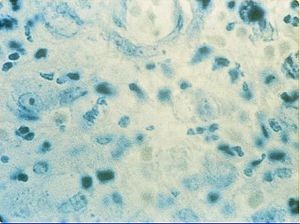ABOUT Granuloma Inguinale - Symptoms and Treatments
What Is Granuloma Inguinale?
Granuloma inguinale is a common skin disease caused by
the fungus Malassezia furfur. It causes red bumps that are usually on the
thighs, buttock creases, or genitals of people afflicted with the condition.
People who are susceptible to this infection are often more likely to
experience symptoms throughout their entire body because mites of this type are
more likely to attack areas near the groin or armpits where air can travel
freely. Common symptoms of granuloma inguinale include excessive itching,
irritation, and redness of the affected areas.
Symptoms
The most common symptom associated with granuloma
inguinale is an itchy red rash. The affected spots can also be accompanied by
scaly patches of skin, which are caused by the proliferation of the mite's
eggs.
The rash may be accompanied by other symptoms,
depending on the severity of the infection; these include;
a small bump that is usually only noticeable when
pressed, itching which starts as soon as they are disturbed, and redness which
can be felt if you touch it.
Treatment is usually recommended in conjunction with
complete skincare regimens to prevent a recurrence. Antibiotics are not
strictly necessary but may help ease symptoms in some cases. These mites are
considered harmless to humans, even though it does cause skin irritation. There
are also natural remedies that can be used to make the itching stop.
Males are on average larger than females of the same
species, but both sexes have a similar body shape. The mite is normally 1.5 mm
long and 0.3 mm wide. It has eight legs, two eyes, no anus, and two incisors in
the mandibles.
Granuloma inguinale is found throughout most of the
world including North America, Europe, Asia, Africa, and Australia. Granuloma
inguinale is more commonly found in tropical countries than temperate zones.
Frequently Asked Questions On Granuloma Inguinale
What Are The Symptoms Of Granuloma Inguinale?
Some common symptoms occur with this mite. These
include red bumps that are usually on the thighs, buttock creases, or genitals
of people afflicted with the condition.
People who are susceptible to this infection are often
more likely to experience symptoms throughout their entire body because mites
of this type are more likely to attack areas near the groin or armpits where
air can travel freely.
Common symptoms of granuloma inguinale include
excessive itching, irritation, and redness of the affected areas.
What Are The Treatments For Granuloma Inguinale?
Treatment is usually recommended in conjunction with
complete skincare regimens to prevent a recurrence.
Antibiotics are not strictly necessary but may help
ease symptoms in some cases. These mites are considered harmless to humans,
even though it does cause skin irritation. There are also natural remedies that
can be used to make the itching stop.
What Is The Significance Of Granuloma Inguinale?
There is no real significance to this mite since it
does not harm humans and does not cause any direct harm to the human system.
Some may feel discomfort and irritation but this can easily be managed.
Some preventive measures can be taken for this
condition; these include; soap and hot water treatments on the affected areas,
avoiding sweating which can aggravate these mites, getting rid of scented
products like perfumes and deodorants that may irritate this mite, and avoiding
wearing tight clothing near your groin area.
Is Granuloma Inguinale Contagious?
No, granuloma inguinale is not contagious and cannot be
transmitted from person to person by contact. The main culprit is sweat and
this can rarely be passed on to other parts of the body if the affected area is
washed after sweating.
This mite tends to attack areas where there is more air
circulation like underarms and groin areas. Many factors can cause the symptoms
of this condition and most of them can easily be managed by following certain
preventative measures.

